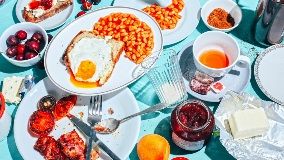
When colitis flares up, it can become difficult to digest various types of food. Therefore, it is important to choose foods that are suitable for colitis. People with ulcerative colitis might want to reduce their consumption of potatoes because they contain high levels of glycoalkaloids. These substances can lead to gas and bloating as well as aggravate the disease. Moreover, consuming fried potato chips or skins can also worsen symptoms. Consuming foods high in sulfur can also be harmful to the body. It can cause diarrhea, cramping, gas and excessive gas. Experts recommend that you reduce the amount of sulfites in your daily diet, as well as avoiding processed food.
If you are trying avoid spicy foods, it's important to stay away. These contain capsaicin, which can be very irritating to the intestine lining and cause a flare-up. This can also lead to colon damage and can make it difficult to maintain remission. You can tolerate ground flaxseeds if you're able. These diets aren't for everyone. Talk to your doctor before beginning a low FODMAP regimen. You will need to confirm that the diet is appropriate for your case.
A low-fiber diet is best for colitis sufferers. You should eat fiber-rich foods when you are in remission. People with Lupus should eat bananas. A simple elimination diet is a good option for those with colitis. The goal is to identify the foods that trigger your colitis symptoms.

It is not recommended that you avoid foods that are rich in soluble or insoluble fiber. However, an IBD diet should include standard recommendations for healthy eating. You should also consider the specific nature of colitis. For example, if you eat too much bread or pasta, you can experience diarrhea and other symptoms. You may be better off eliminating these types of foods during a flare up, or focusing on those that are easy to digest.
It is important to limit dairy products and wheat intake in order to ease colitis symptoms. However, it is not a good idea to cut out certain food groups. Instead, try to reduce the number of foods you eat. You can also incorporate a gluten free diet into your daily diet. You should avoid gluten-free foods and dairy products. You should limit the intake of high fiber foods if you have colitis.
Because people with UC may not have the ability to digest lactose properly, it is important that you limit your intake of dairy products. So, it's important to stay hydrated during a flare up. While limiting dairy products, you can still consume Greek yogurt, which contains probiotics and is low in lactose. Saturated fats are a reason to avoid milk.
It is possible to stick to a diet rich with fruits and vegetables. These are not recommended if your condition is UC. They can increase inflammation in the stomach. They can help with the symptoms of UC. Limiting your intake of raw vegetables and eggs is a good idea if you're experiencing colitis flare-ups. You should avoid eating raw vegetables and eggs if you are suffering from diarrhea. Avoid eating raw vegetables or eggs if you have colitis.

You can also eat salmon. Salmon oil has been shown to help lower inflammation and is rich in protein. Also, tuna and other fishes are high in omega-3 fat acids. It is important to cook fish in a way that does not reduce its nutritional value. It is important to eat more fish and increase your intake of calories and protein. This will prevent you from developing colitis again and help improve your overall health.
Your fiber intake should be reduced. Several sources of fiber contain high amounts of magnesium and folate. These foods are recommended for those suffering from colitis. Avoid foods high in fiber, as these can trigger colitis symptoms. Avoid processed foods, as well as products made from enriched white bread flour. They may cause an outbreak of the condition. They should be avoided if you want to get the best relief from your symptoms.
FAQ
Why is exercise important for weight loss?
The human body is an incredible machine. It was built to move. Our bodies are designed to move, whether we're running, swimming or biking, lifting weights, doing sports, jumping rope, walking or standing still.
Exercise burns calories and improves muscle tone. This will make you feel healthier both mentally and physically. It is common to hear people say that exercise is essential for weight loss. But what exactly is it?
-
Exercise boosts metabolism. Being active can increase your body's ability to use energy. Moving makes your heart beat faster and blood flows more quickly to your muscles. Your lungs also absorb oxygen. All of these activities are energy-intensive. Exercise can help you burn more calories and increase your metabolism rate. You can calculate how many calories your body burns by doing physical activity.
-
Exercise reduces appetite. You will eat less when you exercise, and you will eat fewer calories during the day.
-
Strengthening your muscles through exercise is key. Muscle tissue is more energetic than fat tissue. So if you build lean muscle mass, you will need less food to maintain your current weight.
-
Exercise releases endorphins. Endorphins are hormones which make you happy. They are released into the bloodstream during exercise. Endorphins block pain signals from reaching the brain, according to studies. This gives you a feeling of well-being.
-
Exercise boosts self-esteem. Exercise is a great way to boost self-esteem. People who exercise regularly live longer and healthier lives.
You can lose weight by making small changes. These tips can be added to your daily routine.
How often do people fast every day?
Most people who adhere to a ketogenic lifestyle fast only once per week. But, some people fast twice per week. And others fast three times per week.
There is a variation in the length of fasts. Some people fast 24 hours, while others fast 48 hours.
Some people will even travel more than 72 hours. However, these extreme cases are rare.
How to create an exercise program?
First, create a routine. It is important to plan what you will do each morning and how much time you will be doing it. This helps you plan ahead, and it will also help you avoid procrastination.
It is important to make sure you are getting plenty of variety from your exercise routine. Avoid becoming bored with exercise. If you do, it will be difficult to keep going.
You should also keep track of how you are progressing. It's important to see how much weight you have lost or gained over time.
If you lose weight and then gain more weight, it is easy to lose your motivation. If you gain excessive weight, it can be difficult to remain motivated.
It is important to find the right balance between weight gain or weight loss. You won't be able to exercise if your current weight is not comfortable.
What can I eat while on intermittent fasting in order to lose weight?
To lose weight, the best thing to do is cut back on carbs. This means eliminating carbohydrate-based foods such as pasta, bread, rice, potatoes, or other carbohydrate food.
Also, you should avoid eating too many protein as it can make you feel fuller for longer. You won't feel as hungry.
Instead, choose foods rich in healthy fats. These foods will keep you full for hours after you eat them.
It is vital to ensure that you are drinking enough water. Water helps you stay hydrated, which makes it easier to burn fat.
These foods may be what you crave when you eat fast. This doesn't mean that you must give in to your cravings. If you do this, you might gain more weight that you have lost.
You can avoid overeating by being mindful of how much water you consume each day. Instead of reaching for another snack, sip a glass of water when you feel hungry.
It might sound counterintuitive at first, but it has been shown that this can help you slim down. A study published online in Obesity revealed that people drank more plain water than they did sugary drinks.
Additionally, plain water can help reduce hunger pangs. Drinking water is the best way to lose weight if you don't want sweetened beverages.
It doesn't take much to lose weight. Instead, try to make small changes in your life.
Try swapping out your usual breakfast sandwich in favor of a bowl o' oatmeal. Or swap your afternoon cookie for a piece of fruit.
These simple changes will help you shed weight quickly and without spending a lot of time in the kitchen.
Statistics
- Another study found that 24 weeks of weight training led to a 9% increase in metabolic rate among men, which equated to burning approximately 140 more calories per day. (healthline.com)
- A 12-week study in 20 women with obesity found that walking for 50–70 minutes 3 times per week reduced body fat and waist circumference by an average of 1.5% and 1.1 inches (2.8 cm), respectively (healthline.com)
- According to a study sponsored by the American Council on Exercise, a person weighing around 140 pounds (64 kg) would burn 108 calories at a 30-minute beginner's Pilates class or 168 calories at an advanced class of the same duration (26). (healthline.com)
- Among women, the increase in metabolic rate was nearly 4%, or 50 more calories per day (14Trusted Source (healthline.com)
External Links
How To
How to do Intermittent Fasting (IF)
Intermittent fasting refers to a diet where you only eat one day per semaine, typically Monday through Friday. The idea behind this is to reduce your overall calorie intake while still getting adequate nutrition. This will allow you to burn fat more quickly than eating regular meals throughout the week.
The most common type of IF is to restrict calories on specific days of the week. This means that you might skip breakfast every day and then indulge in whatever food you desire throughout the day. You could also choose three small meals instead of two large meals per day.
Many forms of intermittent fasting are available, such as alternate day fasting (5/2 fasts), 8/4 fasts and 16/8 fasts. Each form of intermittent fasting comes with its own pros and cons. Alternate day fasting is the easiest way to start out because you don't have to make any major changes to your lifestyle. However, some people find it difficult to stick to a strict schedule like this, so they might prefer to try other methods first.
Alternate-day fasting is a good option if you are looking to begin an intermittent fasting program. This will allow you to gradually transition into more extreme fasting routines without completely changing your lifestyle.